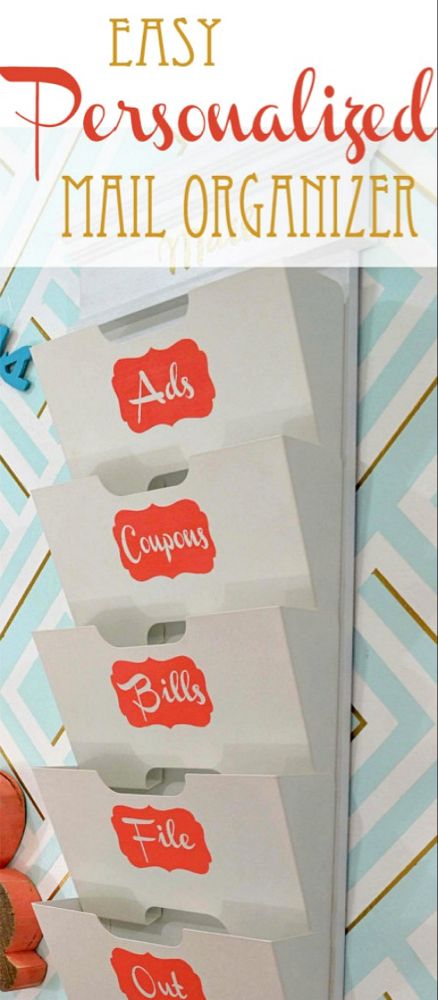Effective Home Paperwork Filing System: Organize Your Life

Managing home paperwork effectively is crucial in today's fast-paced world where every piece of paper seems to demand immediate attention. From utility bills and bank statements to important family documents like birth certificates and insurance policies, paperwork can quickly accumulate, leading to clutter and confusion. Establishing an effective home filing system not only reduces stress but also helps in maintaining financial health and personal organization. This comprehensive guide will explore various strategies to set up your home filing system, offering step-by-step instructions, tips for maintaining it, and solutions to common filing problems.
Benefits of a Paperwork Filing System

Before diving into the "how-tos" of setting up your system, let's understand why a home filing system is essential:
- Reduces Clutter: Organized paperwork means less clutter around your living spaces.
- Time Saver: Quick retrieval of documents saves significant time, especially during tax season or when bills are due.
- Stress Reduction: Knowing where everything is located provides peace of mind.
- Financial Management: Keeps track of financial documents, helping in better money management.
Steps to Create a Home Paperwork Filing System

1. Gather and Sort Your Documents

The first step in setting up your filing system is to collect all your paperwork:
- Gather: Collect all the loose papers from your home, including receipts, bills, statements, and more.
- Sort: Categorize these documents into types like bills, financial statements, health records, etc.
- Shred: Dispose of unnecessary documents securely through shredding to protect against identity theft.
🗂️ Note: Always review documents before shredding to ensure you're not discarding something important.
2. Determine Categories and Subcategories

Grouping documents into logical categories makes retrieval easier:
- Categories: Common categories include Financial, Health, Insurance, Automotive, Household, Legal, and Work.
- Subcategories: Within each category, you might have subcategories like Credit Cards, Loans, or Medical Records.
Here's a simple table to visualize categories and their potential subcategories:
| Category | Subcategories |
|---|---|
| Financial | Bills, Credit Cards, Loans, Investments |
| Health | Medical Records, Insurance, Vaccination |
| Insurance | Home, Car, Life, Health |
| Automotive | Registration, Maintenance Records, Warranty |
| Household | Appliances Manuals, Warranties, Home Improvement |
| Legal | Will, Power of Attorney, Birth Certificates |

3. Choose a Filing Method

Select a method that suits your space and needs:
- Hanging Files: Ideal for those who prefer easy visibility and organization.
- Expandable File Folders: Useful for documents you need to access frequently.
- Binder System: Suitable for those who like to keep things in one place or for documents that can be hole-punched.
- Digital: Convert papers to digital files for those moving towards a paperless environment.
📱 Note: A hybrid system combining physical and digital methods can offer the best of both worlds.
4. Labeling and File Organization

Clear labeling is key to a smooth filing system:
- Label Clearly: Use uniform labels for consistency. Consider using color-coding for different categories.
- File Chronologically: Arrange documents within each category by date to find the latest documents easily.
- Keep Active Files Handy: Files you need often should be within reach.
5. Maintenance and Regular Updates

Maintaining your filing system is as important as setting it up:
- Regular Audit: Set a time once or twice a year to review and purge unnecessary documents.
- Add New Documents: As soon as a new document arrives, file it immediately in its designated place.
- Shred and Recycle: Keep a shredder handy to destroy sensitive documents securely.
In summary, implementing an effective home filing system can transform your daily life by reducing clutter, saving time, and managing your paperwork with ease. By following these steps, you create a system that is not only organized but also adaptive to your changing life circumstances. Remember, the goal is not perfection but practicality. Keep refining your system as needed to make sure it remains functional for your needs.
Frequently Asked Questions

What are the best practices for digital filing?

+
Best practices for digital filing include regular backups, strong password protection, using software for document management, and naming files with descriptive keywords for easy retrieval.
How often should I update my home filing system?

+
Ideally, you should review your filing system at least once a year, possibly during tax season or at the beginning of a new year, to ensure all documents are up to date and unnecessary papers are purged.
What should I do with old tax returns?

+
Keep tax returns for at least 7 years due to potential IRS audits. After this period, securely shred or store them digitally if you’re moving towards a paperless system.